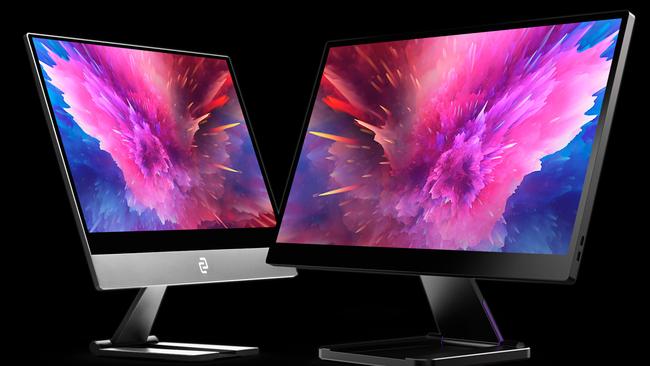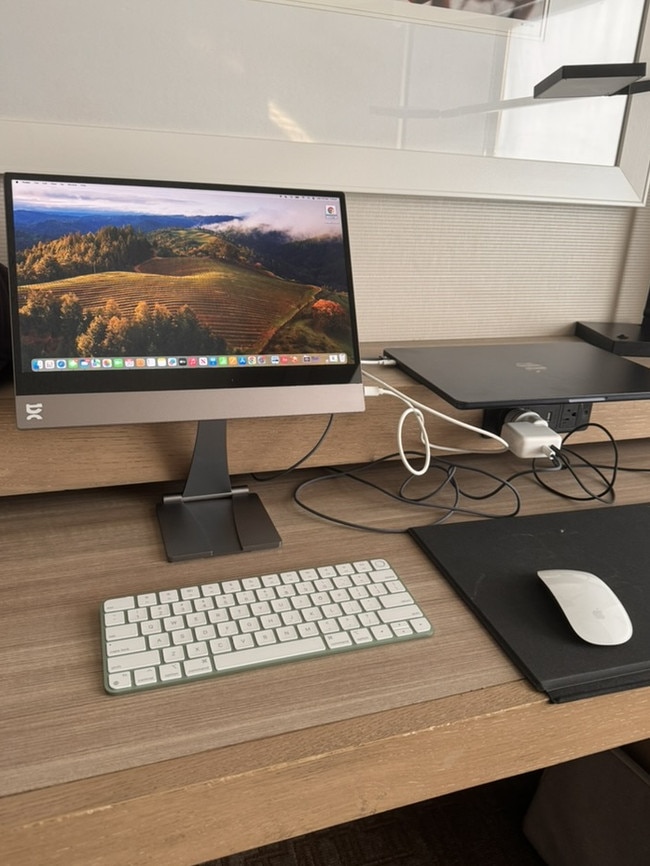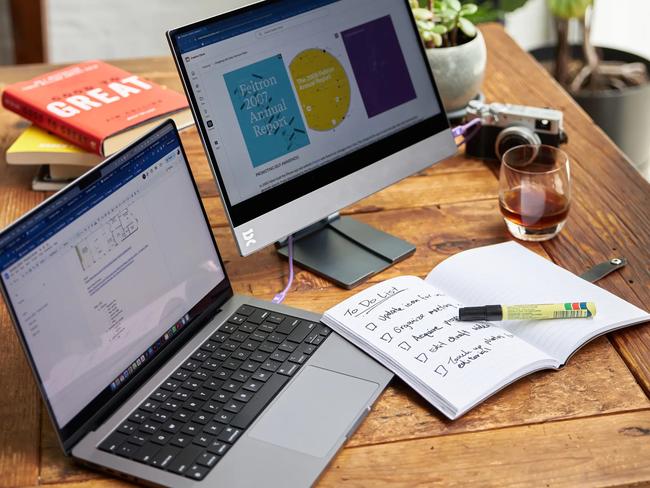How to turn your MacBook into a touch screen, thanks to an Aussie tech firm targeting remote workers
Sydney-based Espresso Displays has created a premium range of portable displays that make life away from the office much easier, while also solving one of the biggest bugbears for Apple users.

My wife would shudder to know what happens when I go on the road for work.
She’s an occupational therapist, you see, and working on laptops on planes, trains – and the back of Ubers – can do serious damage. It’s not ergonomically friendly and can lead to injuries including neck and shoulder strain, back aches, wrist pain and more.
Fortunately for my past few trips I have had some tech on my side that is designed to alleviate this risk. What’s more, it’s homegrown.
Sydney-based Espresso Displays – which Deloitte recognised as one of Australia’s 50 fastest-growing tech brands last year – has developed a range of portable monitors, which can come in packs equipped with magnetic stands, with an adjustable height, and which can come close to mimicking a desktop setup.
The model I tested was a 15.6-inch touch display, the same amount of real estate as my MacBook Air. But it also had models that come in 13 and 17 inches.
When Espresso talked me through their tech, it all sounded promising. But how did it translate to life on the road?

Espresso says it has created the world’s thinnest portable monitor at 5.3mm. That claim has now been challenged by Apple’s latest iPad Pro, which is 5.1mm thick and can also act as a portable monitor. Regardless, Espresso’s is thin and light, weighing 865g. The premium bundle, which retails at $1026, also comes with a microfibre case, which attaches magnetically and can be used as a stand, and helps prevent damage.
But Espresso’s main appeal is a separate foldable metal stand, which attaches to the monitor magnetically, and comes with the premium model. I packed my Apple Magic Keyboard and Mouse and found I was able to recreate a desktop setup that was kinder to my back and neck.
The premium bundle also comes with a Pen stylus, which is handy but also Espresso’s only letdown. Unlike the Apple Pencil, it doesn’t feature wireless charging. You need to connect it to a USB-C cable, which in 2024 is clunky. There is also a screen protector called Creator, which can provide a more paper-like experience when using the Pen.
Setting up an Espresso Display is a breeze. All you need to do is download the EspressoFlow software, then connect the display to your computer with a USB-C cable. Wireless connectivity would be nice, but the cable also keeps the monitor charged and ready to go. I didn’t find it a problem.

The display features 1080p resolution, with 300 nits of brightness, putting it in a decent ballpark for portable monitors. Espresso strikes the right balance of creating a HD package that won’t drain your laptop battery. It also turns a MacBook into a touch display, overcoming a bugbear from many Apple users.
The screen is tough, making it ideal for life on the road. Espresso says it is crafted from a single sheet of aerospace aluminium and hardened, scratch resistant glass. The display also features two USB-C ports.
Espresso is targeting workers who travel – lots – or spend a lot of their time outside the office. It says it’s ideal for architects and those in engineering and construction. Espresso has also developed a Jot app to work with its Pen and popular programs including Google Slides, Apple Keynote and Microsoft PowerPoint, allowing users to mark-up and create documents.,
Espresso is also aiming to capture more of the consumer market, launching in JB Hi-Fi stores across Australia and New Zealand last month.
Co-founder and chief executive Will Scuderi said the JB Hi-Fi partnership was aimed at building scale.





